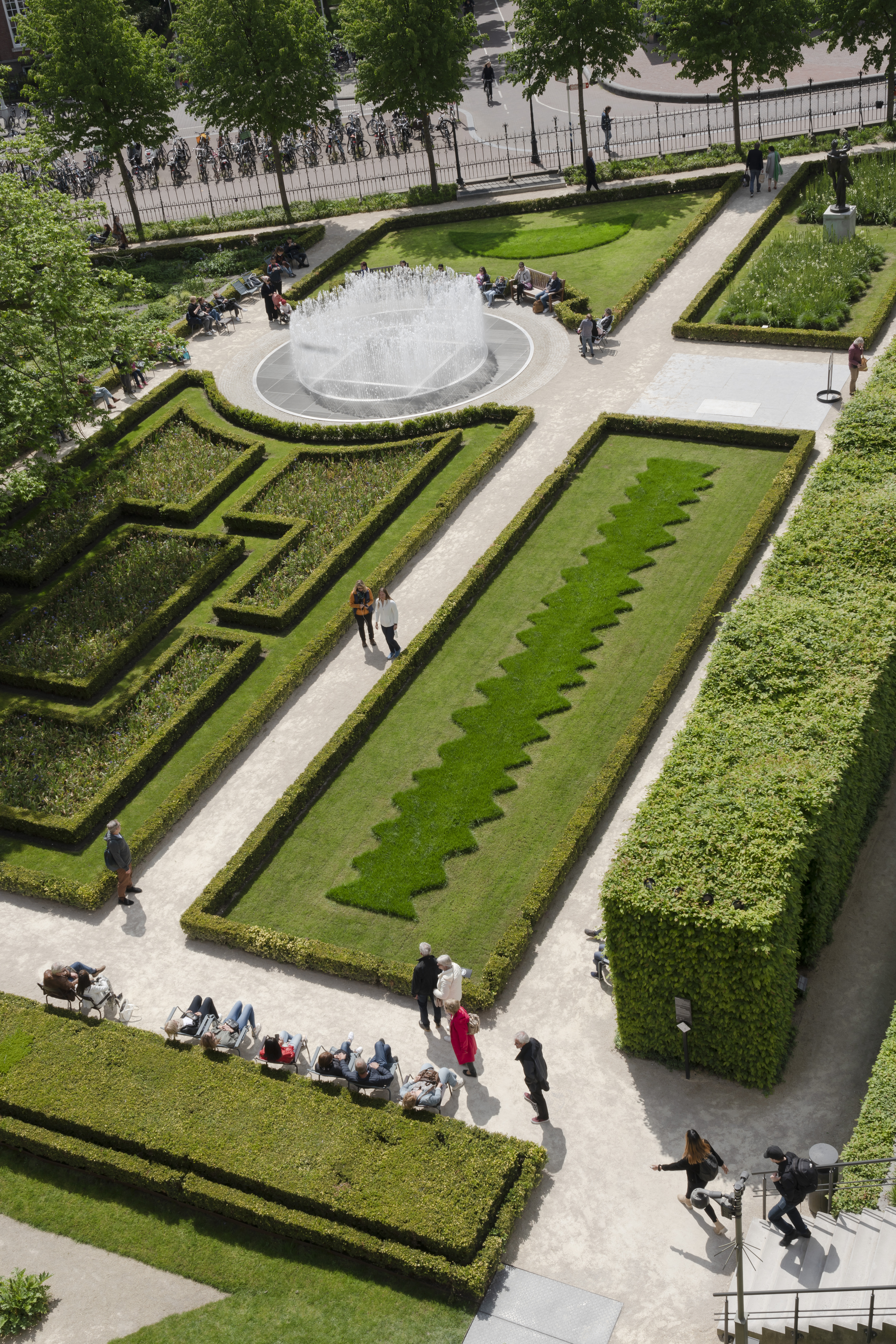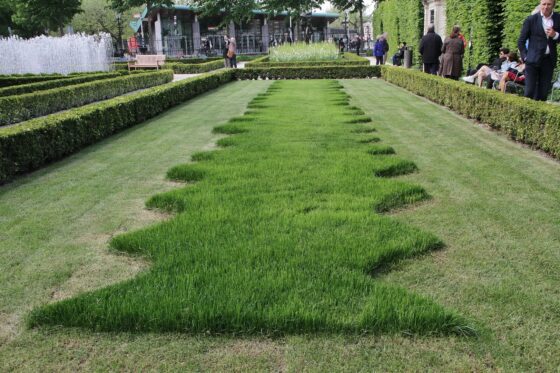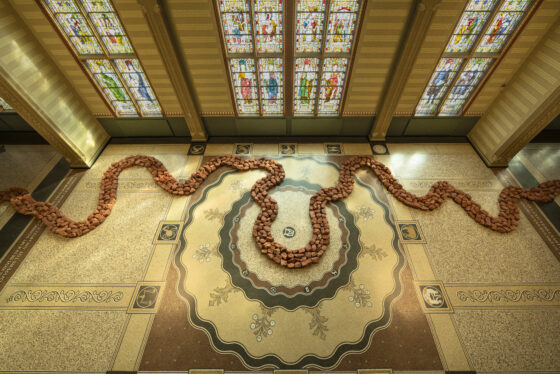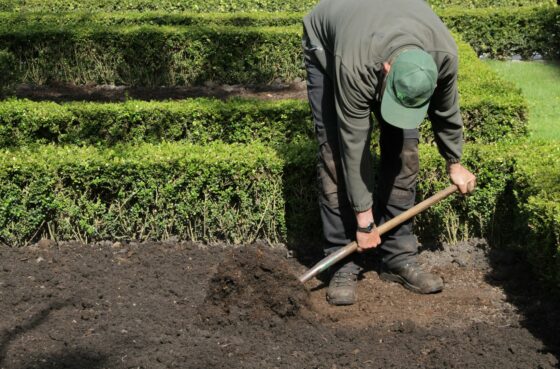Grass, water, stone and €12.5m boost: Rijksmuseum garden shows
Senay Boztas
A long snake of red, Indian rock stretches along the floor of the great hall of the Rijksmuseum. In the atrium downstairs, hundreds of visitors edge around a perfect circle of Swiss stone. The lawns outside are cut into a cross, a moon, wave-like shapes.
These eight interventions are part of the Rijksmuseum Gardens tenth annual sculptural exhibition – open to all and intended to share modern art with a broader public.
At the press opening of Richard Long in the Rijksmuseum Gardens, the Netherlands’ national museum of history and art announced that the largest ever private donation of €12.5 million will keep this initiative green for years to come.
“We have received the largest donation for the Rijksmuseum ever, specifically for the gardens, and without this donation we could not have made this exhibition,” said director Taco Dibbits on Tuesday. “Ten years ago we had the first garden exhibition, and this year’s is a very unusual, an almost modest one by Richard Long. He doesn’t talk about art: he talks about the traces you leave behind.”

Long, an artist from Bristol who is known for creating “sculptures” by intervening in landscapes during long walks, said he wanted to bring a sense of the wilderness to this inner-city museum. “My whole essence of an artist is to have amazing freedom to use the world in many different ways,” he said. “So I can make a water drawing on a rock face in Mexico that dries in half an hour in the sun. And I can make a work here in the museum.”
A curvy shape cut into the grass called Life Line referred to one of his early works, he said. “It leads to my famous line made by walking, a straight line of footprints in a field in England in 1967, which revealed to me that I could make something out of nothing in a way,” he said.
“The line I made became a footpath, a line on the map, which also became a work of art. By the simple act of walking, I could expand the whole scale of the work of art into a huge distance. So the title of Life Line represents my serious philosophy of following one idea, or my life, giving it a kind of significance…The works are both modest and also very ambitious.”

In the case of this exhibition, what could appear to be effortless took a lot of work, joint curator Frits Scholten admitted . When the negotiations for the exhibition started in 2019, it became clear that Long would want to work with the museum’s lawns but – disaster – this year’s weather almost killed that prospect.
“This was a sandpit with a few green shoots, so we laid grass mats but they only grow when it hits 15 degrees,” he said. “Richard Long has said it’s like making sandcastles on the beach, and you can see his art as a big game…But it didn’t happen by itself.”
Nonetheless, the gardeners now have strict instruction to maintain the strands at a certain length, spray for weeds if necessary and encourage visitors to keep off the grass. Albert Parquement, co-curator, said, despite the apparent artlessness, “he wants this work to remain more or less as it is until the end of the exhibition.”

But 78-year-old Long does intend for his art to vanish in good time. “I’m not interested in making a monument,” he said. “The works will leave no trace.”
Inside the museum, meanwhile, everyone hopes that Long’s art will leave happy memories but no lasting damage. The atrium is taken up with a massive stone installation – Black White Green Pink Purple Circle and the great hall upstairs has a “River of Stones” at perfect tripping height. “The most important risk was the stumbling public,” said Scholten. “We have put in extra security.”
Richard Long in the Rijksmuseum Gardens opens on May 26 and runs until October 29
Thank you for donating to DutchNews.nl.
We could not provide the Dutch News service, and keep it free of charge, without the generous support of our readers. Your donations allow us to report on issues you tell us matter, and provide you with a summary of the most important Dutch news each day.
Make a donation